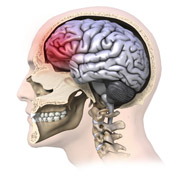Research and Innovation, UNL Office of

Center for Brain, Biology, and Behavior: Faculty Publications
Document Type
Article
Date of this Version
3-16-2011
Citation
2011 International Federation of Clinical Neurophysiology. Published by Elsevier Ireland Ltd. All rights reserved.
Abstract
Objective: This study aimed to use magnetoencephalography (MEG) to examine the question of whether Mandarin-English bilingual speakers recruit the same cortical areas or develop distinct language-specific networks without overlaps for word processing.
Methods: Eight healthy Mandarin-English bilingual adults and eight healthy English monolingual adults were scanned while single-word paradigms were audio-visually presented.
Results: Our results showed significantly stronger beta-band power suppression in the right inferior parietal lobe (IPL) covering the supramarginal gyrus (BA 40) and angular gyrus (BA 39) for bilinguals when processing Mandarin versus English. Moreover, there were no significant differences between bilinguals and monolinguals in the left inferior frontal cortex (LIFC, BA 44/45) when both were processing their first language.
Conclusions: These results support the view that Mandarin-English bilinguals have a shared neural system for word processing in both the first and second language, which is highly similar to monolinguals’, but with stronger right hemisphere involvement.
Significance: To our knowledge, this is the first MEG study to investigate the spatio-temporal and frequency characteristics between bilinguals and monolinguals, which provides us a new angle to better understand the language system in bilinguals’ and monolingual’s brain.
Included in
Behavior and Behavior Mechanisms Commons, Nervous System Commons, Other Analytical, Diagnostic and Therapeutic Techniques and Equipment Commons, Other Neuroscience and Neurobiology Commons, Other Psychiatry and Psychology Commons, Rehabilitation and Therapy Commons, Sports Sciences Commons


Comments
Clinical Neurophysiology 122 (2011) 1706–1717